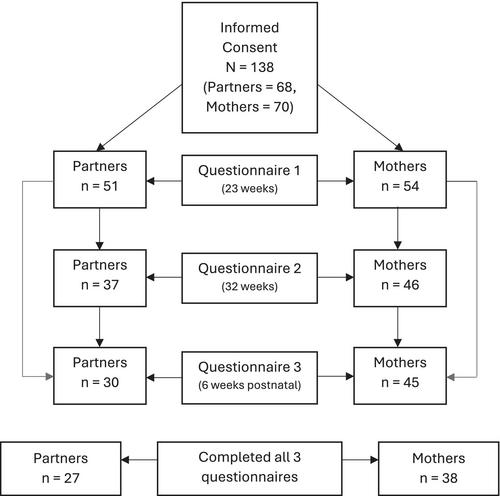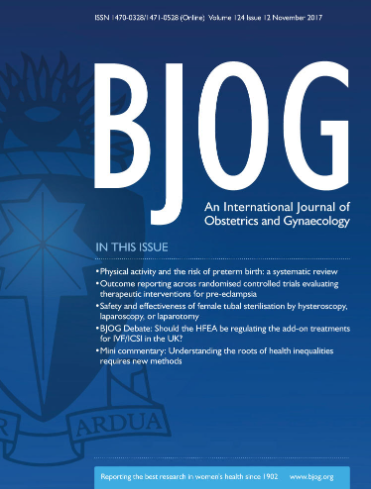Psychological Distress, Post-Traumatic Stress and Emotional Suppression in a Pregnancy After a Perinatal Death: A Longitudinal Survey
Abstract
Objective
To evaluate parents' psychological distress and emotional suppression in the antenatal and postnatal periods of a pregnancy following a perinatal death.
Design
Questionnaire.
Setting
Tertiary Maternity Unit in the UK.
Sample
Parents who were pregnant and attending a specialist antenatal clinic for pregnancy after loss.
Methods
Partners and mothers completed questionnaire measures which evaluated their levels of depression, anxiety, post-traumatic stress (PTS) and emotional suppression at 23 and 32 weeks' gestation, and 6 weeks postnatally. Repeated measures ANOVA or Friedman tests were used to identify significant changes in scores. Independent samples t-tests or Mann–Whitney U tests were used to determine significant differences in partners' and mothers' group scores. The proportion of partners and mothers scoring above threshold for each measure was identified, and a one-sample t-test examined partners' and mothers' within-couple scores.
Main Outcome Measures
Psychological distress and emotional suppression.
Results
Fifty-one partners and 54 mothers completed the questionnaire. Partners', but not mothers', depression symptoms significantly decreased (p = 0.004; 95% CI 0.6–2.7) from 23 weeks' gestation (M = 11.32, SD = 5.35) to 32 weeks' gestation (M = 9.68, SD = 4.68). Mothers' depression symptoms significantly decreased (z = −3.91, p < 0.001) from 32 weeks gestation (median value of 13; IQR 8–17) to 6 weeks postnatal (median value of 10; IQR 5–13). Parents' anxiety levels did not change across the course of pregnancy. Mothers', but not partners', anxiety symptoms significantly decreased (z = −2.49, p = 0.013) from 32 weeks' gestation (median value of 7.5; IQR 4–14) to 6 weeks postnatal (median value of 6; IQR 2–13). PTS did not change across the course of a pregnancy, and mothers' symptoms continued into the postnatal period. Partners are more likely to hide their emotions during pregnancy than mothers (z = 3.35, p < 0.001).
Conclusion
Parents who have experienced a prior perinatal death are likely to experience symptoms of anxiety, depression and PTS in a subsequent pregnancy. Anxiety in partners and PTS in mothers may continue into the postnatal period. Specialist mental health support (e.g., counselling) offered within a dedicated pregnancy after loss service is one way to support parents. Further research is needed to determine whether psychological distress impacts negatively on parent–child bonding.





 求助内容:
求助内容: 应助结果提醒方式:
应助结果提醒方式:


